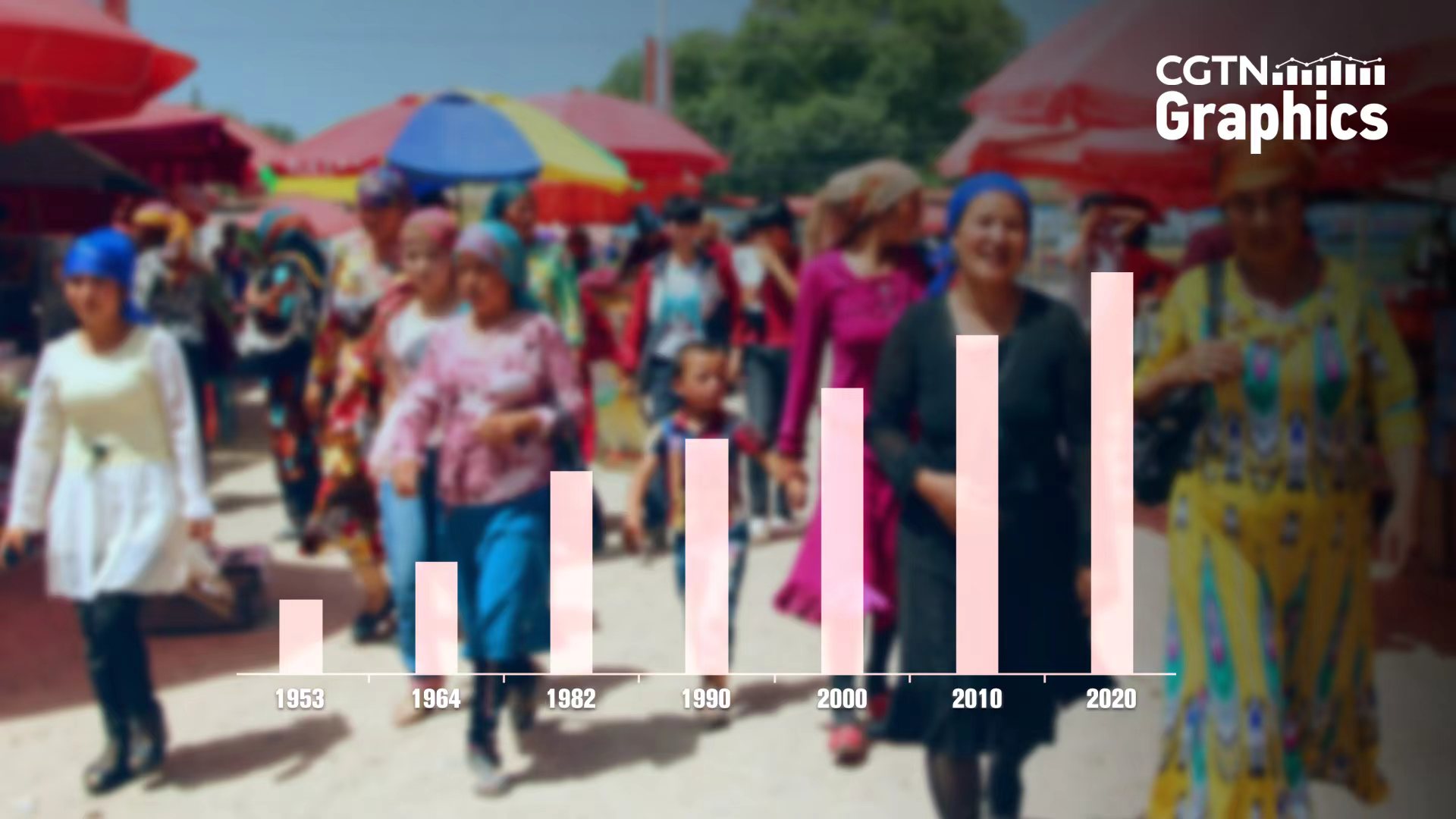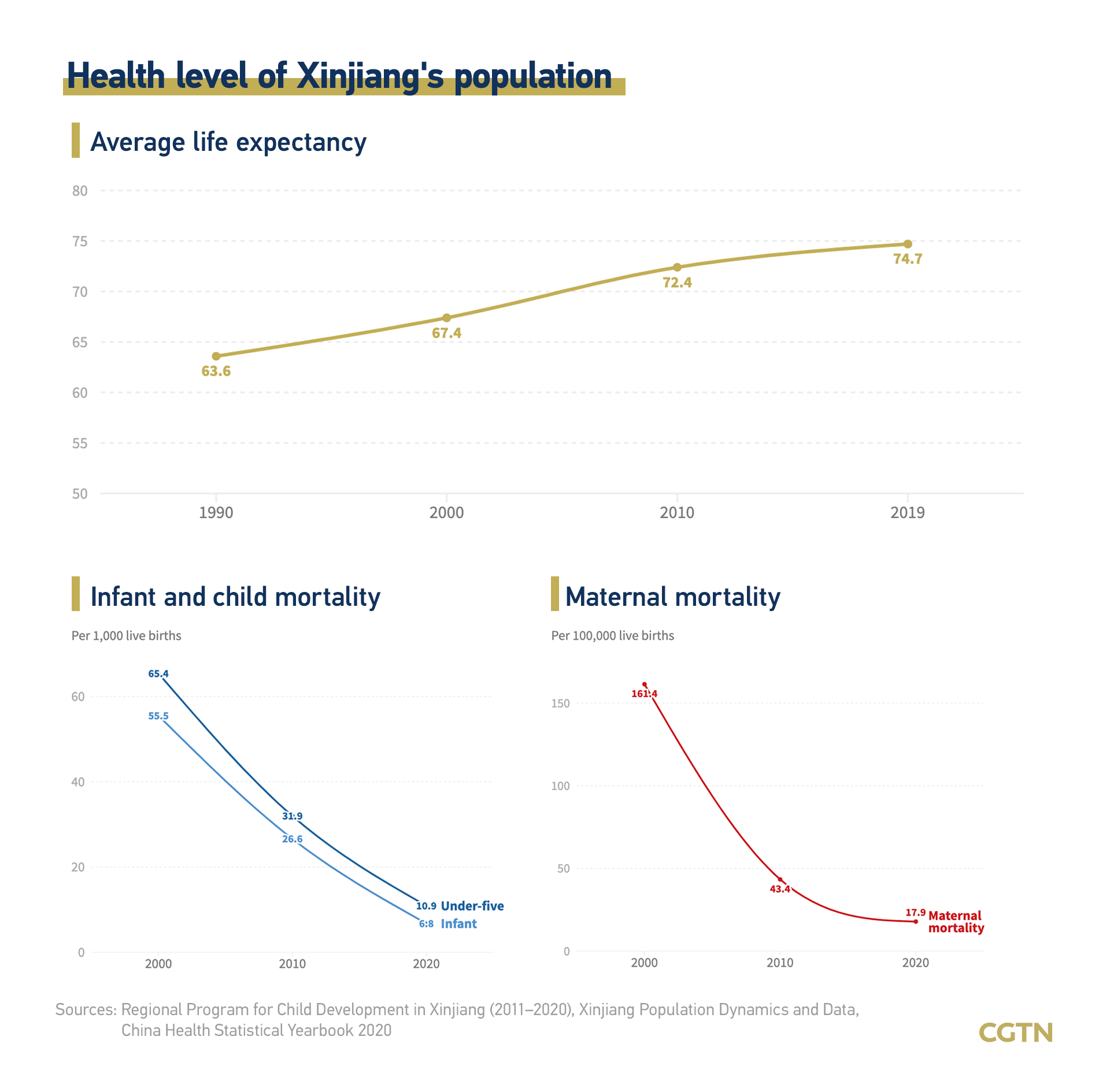01:32

China rejected a report by the UN human rights office over Xinjiang on Thursday.
"It's totally illegal and invalid," said Chinese Foreign Ministry spokesperson Wang Wenbin. "The report is a hodgepodge of misinformation, a political tool used by the West to push its strategy of 'using Xinjiang to contain China.'"
In recent years, Xinjiang has achieved economic development, social harmony and stability, continuous improvement in people's livelihood, and religious harmony, the spokesperson noted.
Read more:
China on OHCHR Xinjiang report: Not backed by mainstream of int'l community
Data shows Xinjiang's population, in particular that of ethnic minority groups, has continued to maintain steady growth benefiting from consistent social stability.
The Xinjiang Uygur Autonomous Region has a population of 25.85 million, according to the seventh national census in 2020, among which ethnic minorities numbered 14.9 million and the Han ethnic group 10.9 million.
The national censuses show that the ethnic minority population in Xinjiang has grown rapidly over the past seven decades.
All of China's 56 ethnic groups can be found in Xinjiang, with Uygur, Han, Kazak, Hui and Kirgiz, the five largest groups, said the white paper titled "Xinjiang Population Dynamics and Data," released in September 2021 by the State Council Information Office.
Read more:
China issues white paper on Xinjiang's demographic development
Graphics: Demographic changes in Xinjiang over the years
The following chart shows the composition of the population in Xinjiang.
A significant improvement has been seen in public health. The average life expectancy of people in Xinjiang was 74.7 in 2019, up 7.3 years from 2000. Infant mortality rate, mortality rate for children under five years of age, and maternal mortality rate went down from 55.5 per 1,000, 65.4 per 1,000, and 161.4 per 100,000 in 2000 to 6.75 per 1,000, 10.91 per 1,000, and 17.89 per 100,000 in 2020.

Steady progress has been made in education. The average years of schooling for people aged 15 and above rose from 9.27 years in 2010 to 10.11 years in 2020, 0.2 years higher than the national average of 9.91.
Compared with 2010, the number of people with university education rose from 10,613 to 16,536 per 100,000 persons; and those with high school education grew from 11,669 to 13,208.
The education level of the ethnic Uygur population has also continued to improve. According to data from the seventh national census in 2020, 8,944 per 100,000 Uygurs had received a university education, an increase of 6,540 from the year 2000. The average years in education for those aged 15 and above also grew from 7.06 to 9.19.

